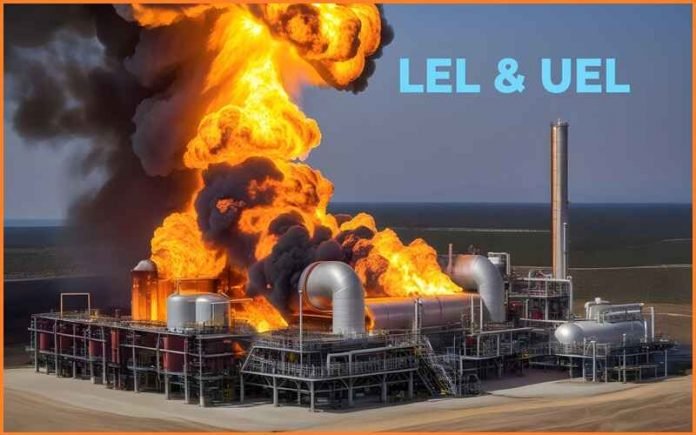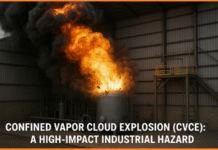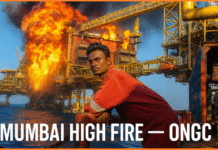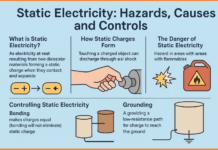In industries where flammable gases are present, the concepts of Lower Explosive Limit (LEL) and Upper Explosive Limit (UEL) is important for ensuring safety. LEL and UEL are fundamental parameters used to assess the risk of fire or explosion when working with combustible gas mixtures. This article explores the definitions, significance, and applications of LEL and UEL in various industrial settings.
Contents
Definition of LEL and UEL
LEL stands for Lower Explosive Limit. It refers to the minimum concentration of a combustible gas or vapor in the air below which it cannot ignite or explode. Any concentration of the gas or vapor below the LEL is known as a “lean” mixture, meaning it contains too little fuel for combustion to occur. LEL is an important parameter in assessing the potential hazards of flammable substances.
UEL stands for Upper Explosive Limit. It refers to the maximum concentration of a combustible gas or vapor in the air above which it cannot ignite or explode. Any concentration of the gas or vapor above the UEL is known as a “rich” mixture, meaning it contains too much fuel for combustion to occur. UEL is an important parameter in evaluating the potential hazards of flammable substances. It is crucial to work within the LEL and UEL range to maintain safe conditions and minimize the risk of explosions or fires.
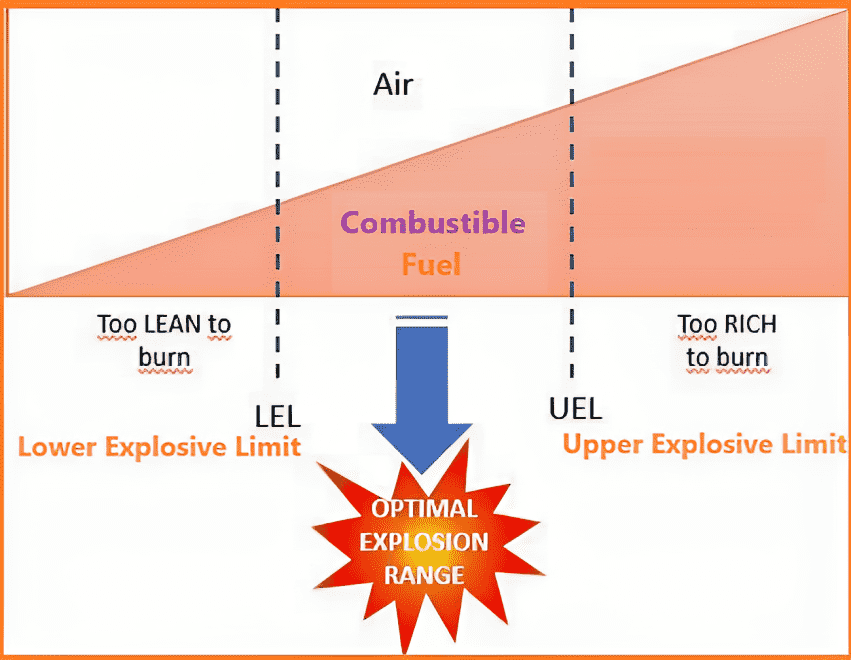
Safety considerations of LEL and UEL
- Safety Considerations: LEL and UEL values are critical for establishing safe operating conditions. Working with gas concentrations below the LEL ensures that the mixture is not combustible, while avoiding concentrations above the UEL prevents the mixture from becoming too rich to ignite.
- Explosion Prevention:Maintaining gas concentrations within the LEL and UEL limits is essential for preventing explosions. Deviating from these limits increases the risk of fire or explosion, posing serious threats to personnel and property.
Measurement and Detection
- Gas Detectors:Specialized gas detectors are employed to continuously monitor the concentration of combustible gases in the air. These detectors are calibrated to trigger alarms or shut down processes if gas concentrations approach the LEL or UEL.
- Explosion-Proof Equipment:In areas where combustible gases are present, electrical equipment and instrumentation are often designed to be explosion-proof to prevent sparks that could ignite a flammable atmosphere.
Applications in Various Industries:
- Oil and Gas Industry:LEL and UEL considerations are crucial in oil and gas exploration, refining, and processing to prevent catastrophic explosions. Monitoring gas concentrations is vital in areas such as drilling platforms, refineries, and storage facilities.
- Chemical Manufacturing: Industries producing or using volatile chemicals must closely monitor LEL and UEL to ensure worker safety and prevent accidents that could lead to chemical releases or explosions.
- Mining Operations: In mining, where combustible gases like methane may be present, understanding and controlling LEL and UEL are essential for preventing underground explosions.
Lower Explosive Limit (LEL) and Upper Explosive Limit (UEL) are fundamental parameters in ensuring the safety of operations involving combustible gases. Implementing effective monitoring systems, adhering to safety protocols, and using explosion/flame -proof equipment is integral to preventing accidents and safeguarding lives and property. In industries where the risk of fire or explosion is inherent, a thorough understanding of LEL and UEL is a cornerstone of responsible and safe operational practices.


